Aswan – More Than Just a Dam
Alison and I recently spent several weeks in Egypt on a tour arranged by the Canadian company Adventures Abroad with which we have traveled on numerous occasions and never been disappointed. Every trip has its expected highlights and in Egypt they were many – the Pyramids & Sphinx, the Temple of Luxor and the Valley of the Kings to name just a few. But just as predictably there will be unexpected surprises; places you didn’t really have on your radar before the trip began. On this trip it was the small city of Aswan and the very many interesting historical, cultural and natural things to do there and in the immediate area. There was lot more to Aswan than just the famous High Dam. Won’t you join me as I give you plenty of good reasons to visit Aswan.
Getting to Aswan
Here is a map of Egypt. You can see Aswan at the bottom, the last major settlement in the country (or the first if you are coming from Sudan). Below it is massive Lake Nasser, created by the building of the Aswan High Dam in the 1970’s; probably the thing that most people most associate with the city.
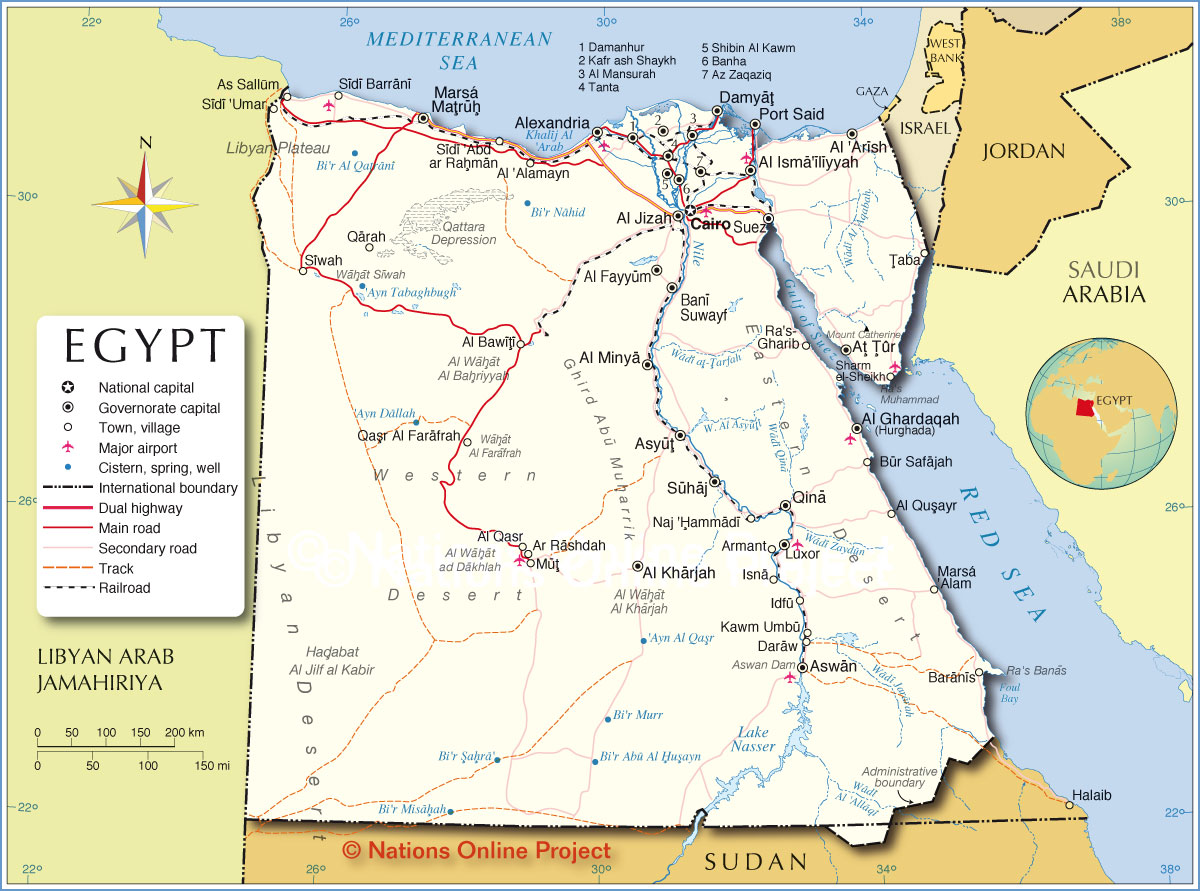
The other thing you can see from the map is that Aswan has an airport. For a country of over 90 million people, Egypt has very few domestic airports and Egyptair, the national carrier, only has about six or seven destinations it flies to within the country. Because it has an airport, the majority of tourists arrive by air, but if you are feeling adventuresome and time is not an issue, you can take the overnight sleeper train from Cairo. I love trains and may return to Egypt one day just to experience the Nile countryside from the perspective of a passing train.
However, the flight from Cairo to Aswan also offered some very interesting views of the Nile as it snaked its way north toward the Mediterranean. From 25,000 feet you can really grasp that the Nile is the Egyptian lifeline and that only a few miles from its banks on either side, there is nothing but desert.
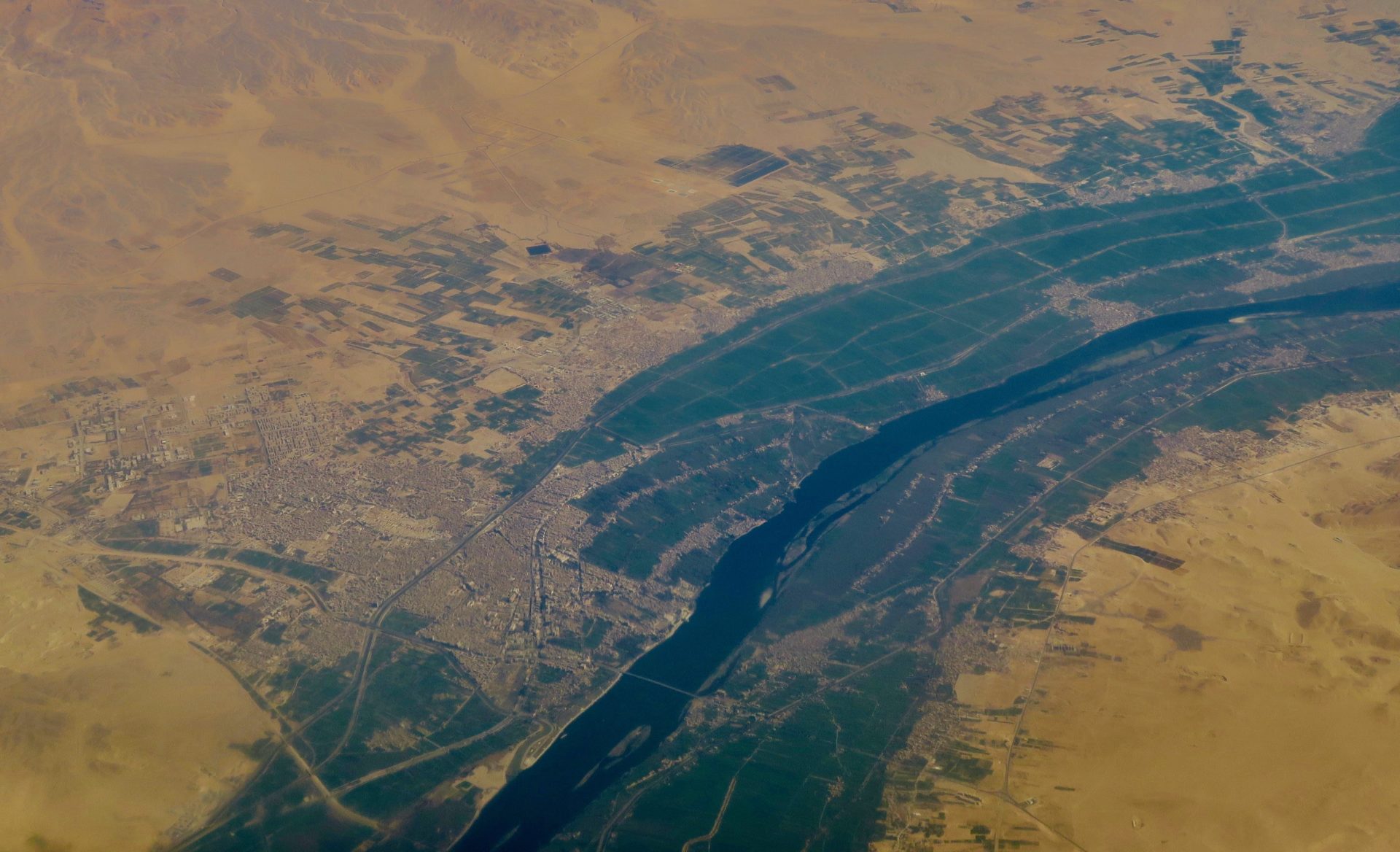
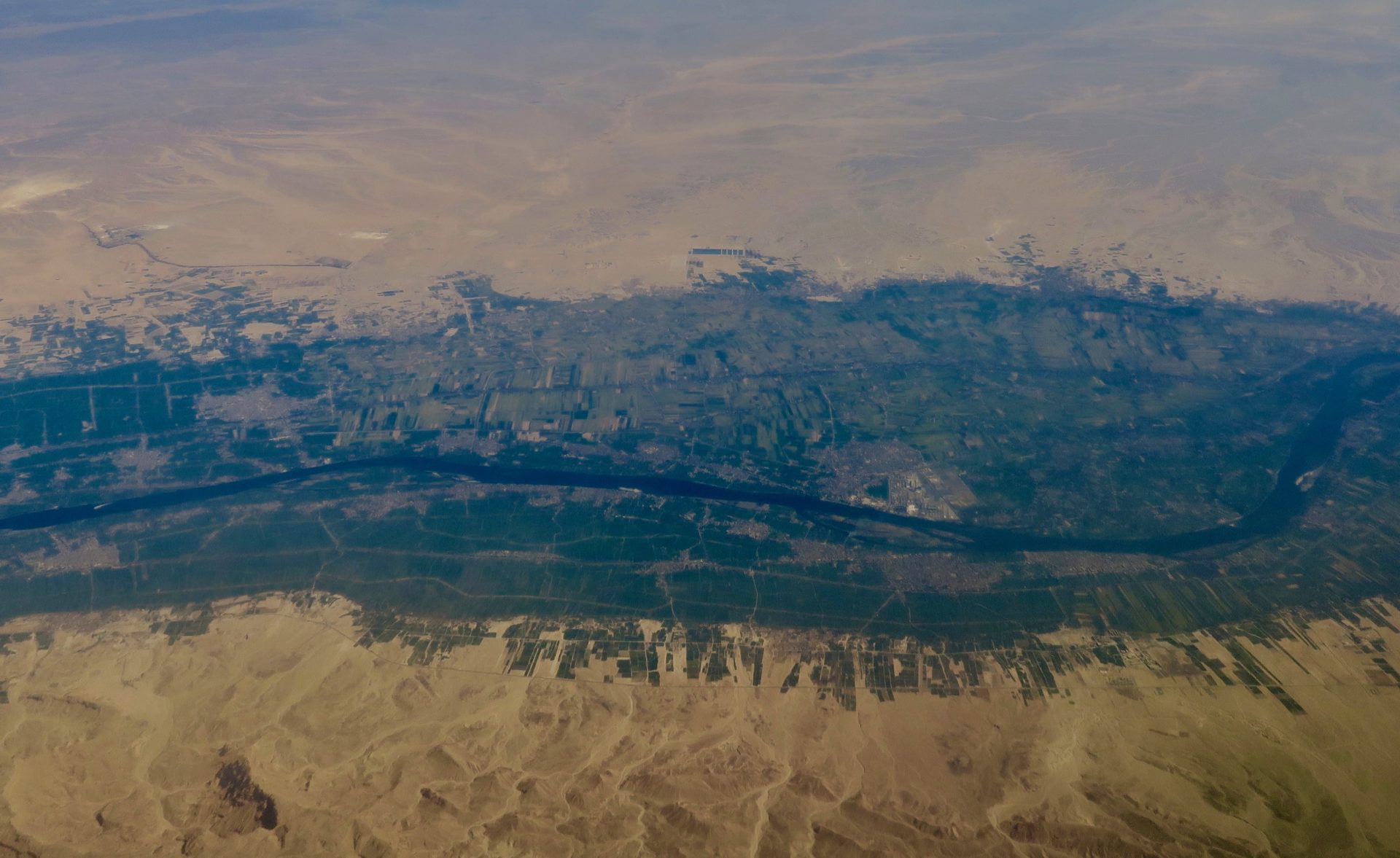
Landing at the small airport, I noted that there were only a few flights a day in and out and the place was pretty well deserted except for those who had just deplaned. There was a small duty free shop and despite technically not departing on an international flight, with a little wheedling and some pleading the genial fellow behind the cash register let me buy a bottle of gin. Other than at the tourist hotels, it is virtually impossible to buy liquor in Egypt so I wasn’t going to let this opportunity slide.
A bus was waiting for our group and we headed for our hotel. Along the way the road passed over the top of the Low Dam, which I didn’t even know existed. After coming from Cairo and Giza, Aswan was a real delight in terms of the lack of traffic and a much more laid back atmosphere. Also it seemed a lot cleaner and the people less frenetic than those in the metropolis of Cairo/Giza. The Nile was constantly in view, alive with feluccas and the covered motorboats that are used to get people back on forth from the many islands that dot the Nile around Aswan, as well as to the other side. Just looking out the window of the bus I definitely got the feeling that I was in an exotic, but not dangerous, place.
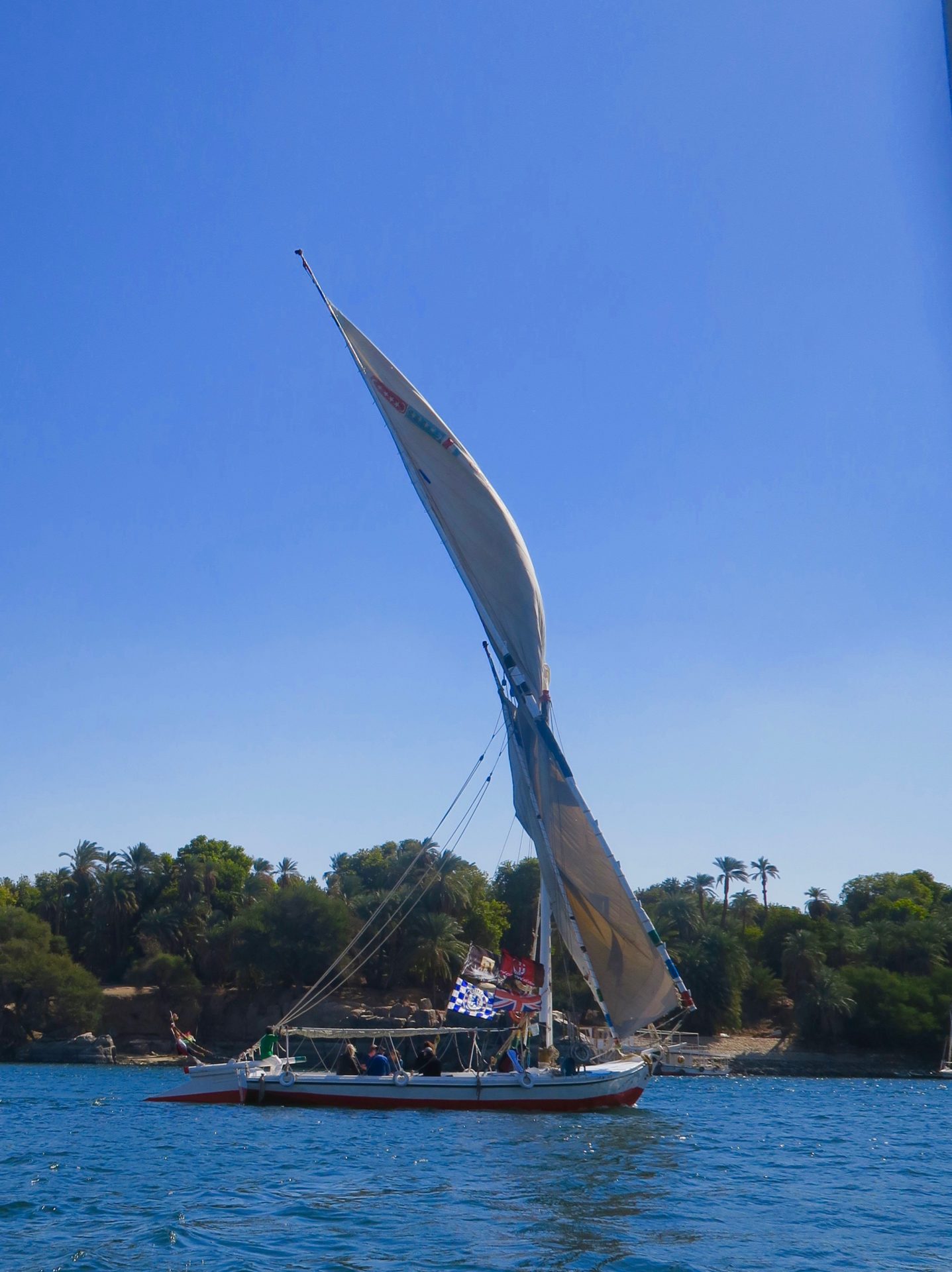
Aswan, the City
By Egyptian standards, Aswan is a small city with just under 300,000 residents. It is the administrative capital of the Aswan Governate which has a population of 1.4 million of whom over 800,000 live in rural areas along the Nile. The city’s roots go far back into antiquity, at least 4,000 years. It once was the gateway to the almost mystical land of Nubia where products like gold, ivory and incense were exchanged for cloth, grain, beer and other manufactured goods, the luxe goods going south and the practical stuff going north. Even though Aswan has an almost unbroken line of history for four millennia, it is actually quite a modern city with most of the buildings dating from the 20th century. It’s quite safe to walk around in and very pleasant along the main thoroughfare, the Kornish Al Nile, with lovely views of Elephantine Island from the promenade that borders it.
Ok, I’ve set the table and now I’ll tell you about the things that made Aswan a special place for me.
The Mövenpick Resort Aswan
A hotel? Really? Absolutely.
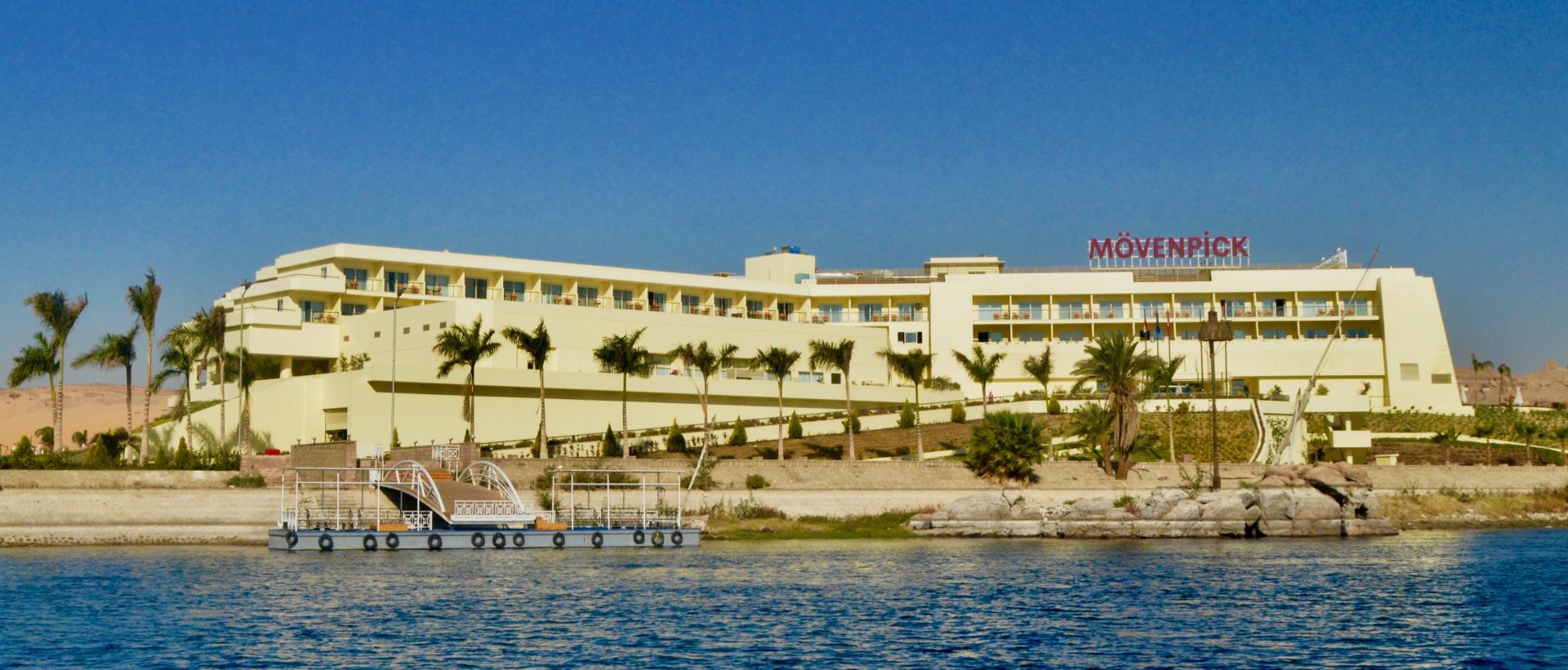
One of the upsides to the collapse of the western tourist market is that the prices for luxury hotels have come down dramatically. The few westerners who do go will get a lot more bang for their buck and that includes tour providers like Adventures Abroad who have taken advantage of the availability of places like the Mövenpick that previously only catered to the most upscale of tour groups. Even though the vacancy rates are quite high, chains like Mövenpick, which is Swiss, are expected to maintain the same standards in Aswan as they would in say Geneva.
The Mövenpick Resort is on Elephantine Island, which lies 150 metres (200 yards) off the Kornish and can only be reached by boat. The hotel operates its own boat service and our boat was dutifully waiting for us at the ferry landing when our bus from the airport pulled up. This was actually the first time (of many to come) that we actually got onto the Nile River and it was surprisingly exhilarating. Although you would never drink the water, it was not foul smelling and in fact quite refreshing with a steady breeze blowing that propelled the many feluccas zipping this way and that among the many islands of the Aswan archipelago.
As you can see from the picture above, the Mövenpick is a pretty interesting looking hotel given it’s location. The builders clearly wanted to take full advantage of the Nile views that can be seen from every room in the hotel. After landing we walked the short distance to the hotel lobby, although we could have taken a golf cart if we wanted to. Someday I might need one to go 100 yards, but thankfully not yet.
The lobby of the Movenpick is quite spectacular with high, high ceilings seemingly held up by faux palm trees that are works of art in themselves – I know it sounds like I’m getting carried away, but I really was impressed with this lobby.
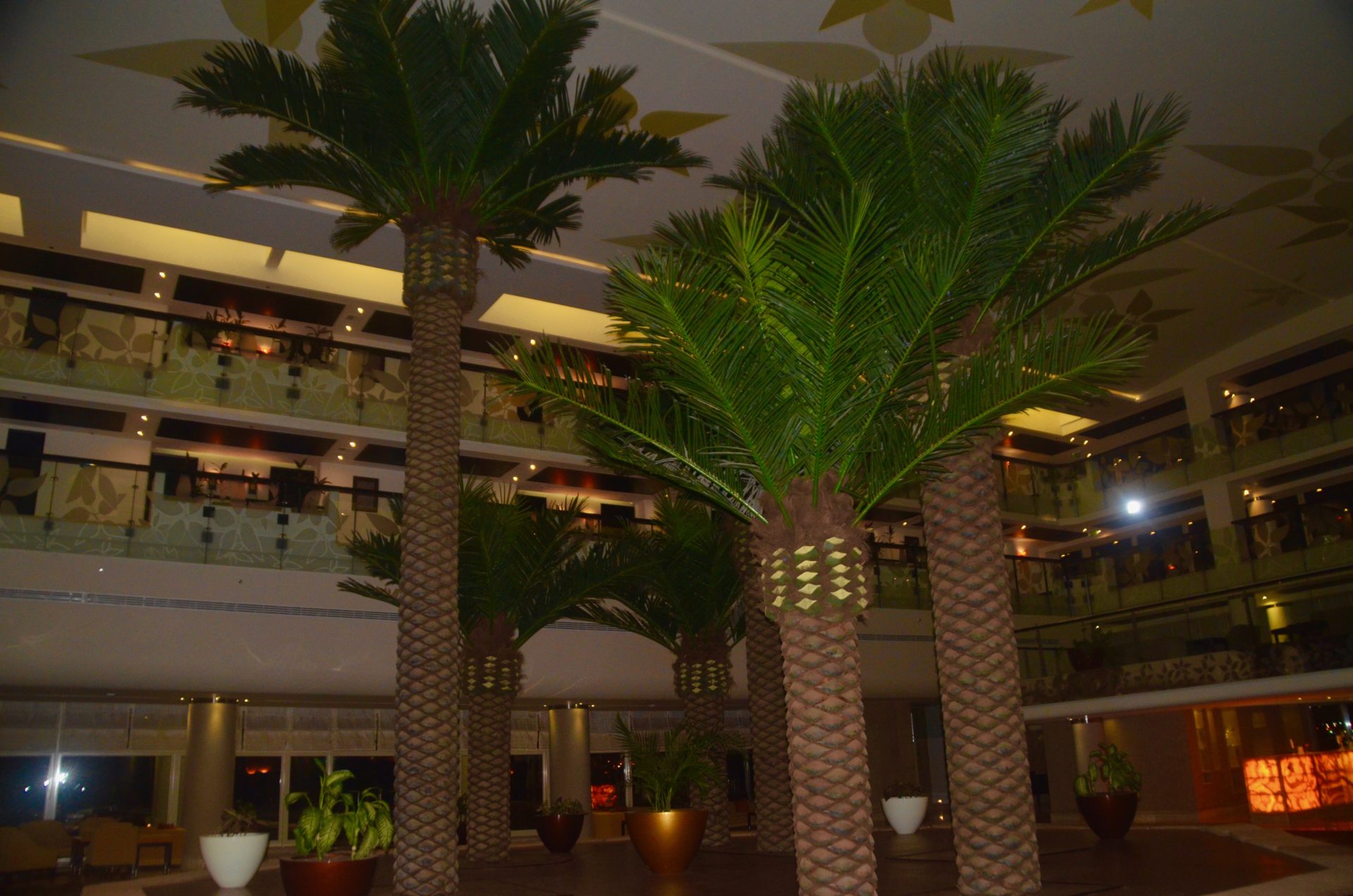
However, it is really the view from the rooms that make the place. Every room has a good sized balcony which either faces the city of Aswan or, as in ours, the western side of the Nile where you can see a combination of pharaonic tombs and more modern Shia tombs. This is room 1106.
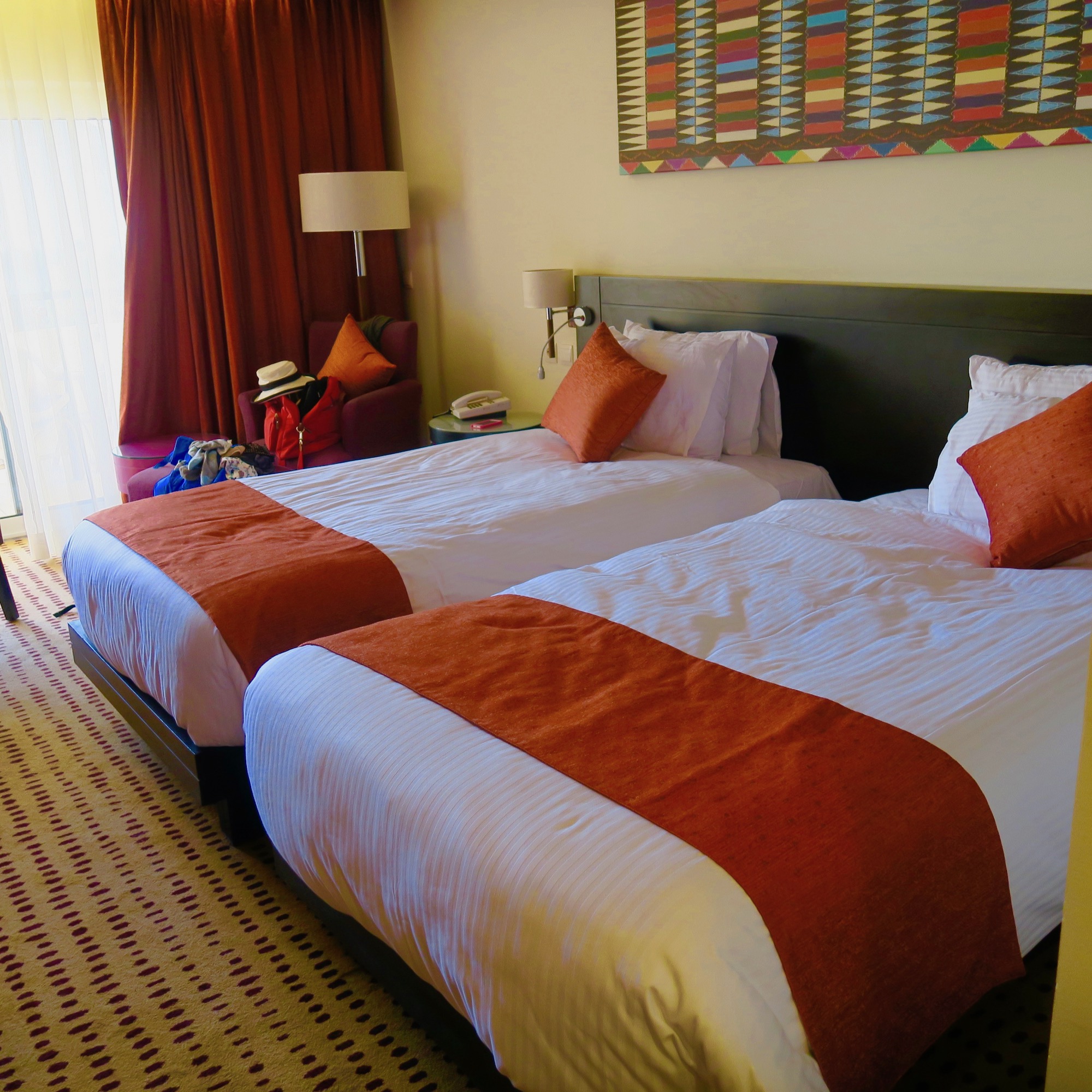
This is the balcony.
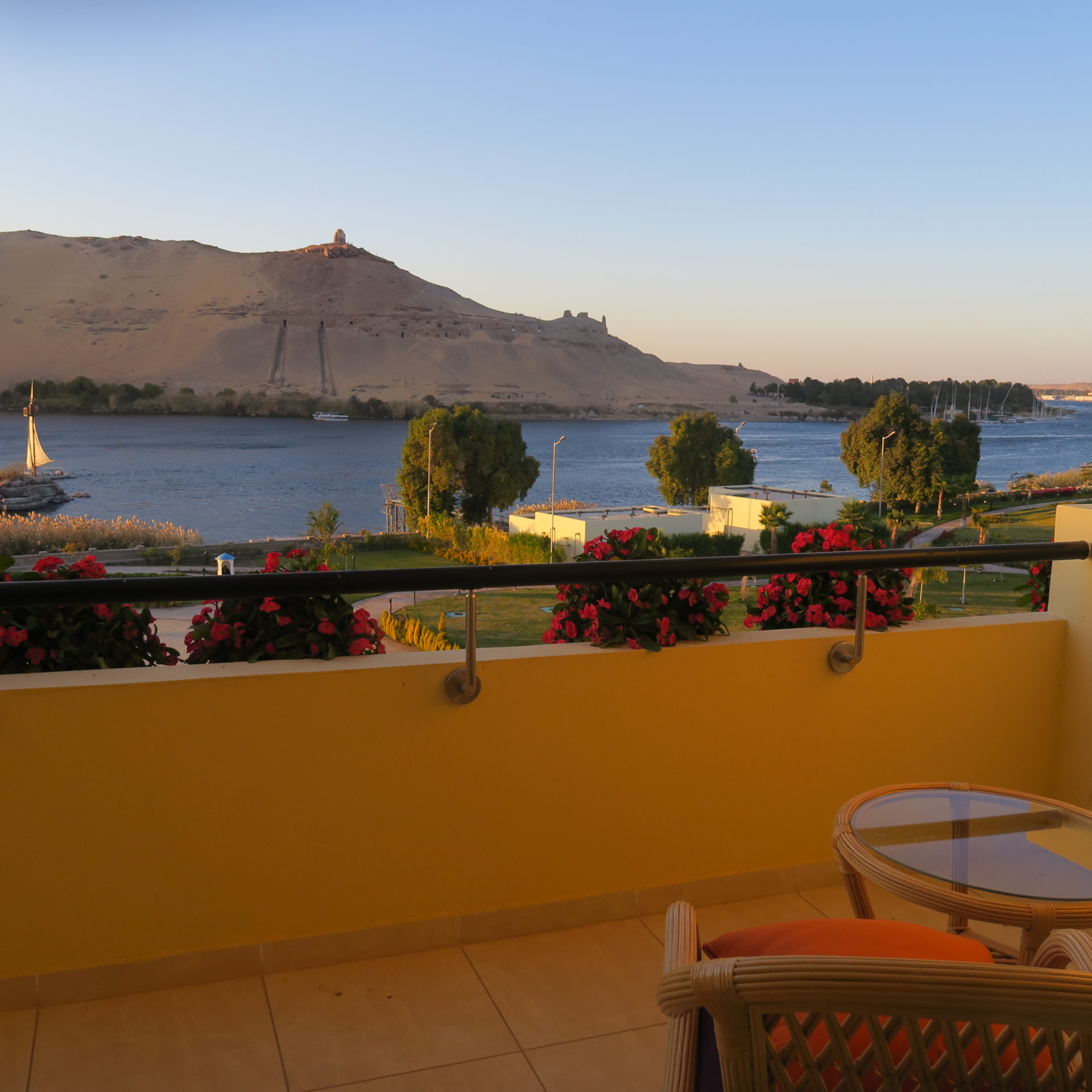
And this is the view. Pretty amazing – 4,000 years of Egyptian history just across the river.
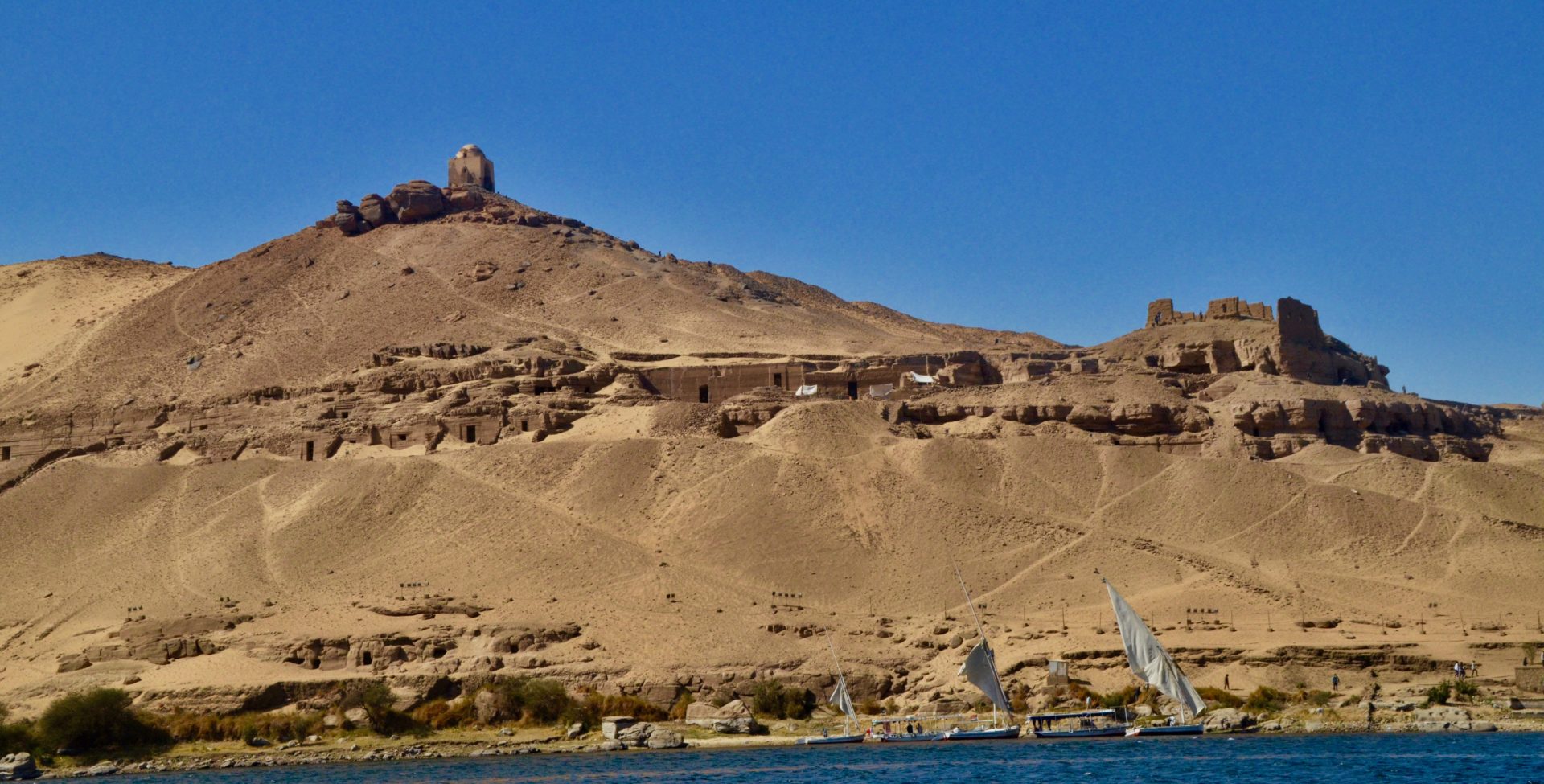
It didn’t take long to put the gin to good use as I sipped a g&t and watched life on the Nile, the same way Lord Kitchener might have when he was Consul-General of Egypt over 120 years ago.
OK, we’ve got a great place to stay, what next?
The Philae Temples
Without doubt the top attractions in the immediate Aswan area are the Philae Temples on tiny Agilkia island located between the Aswan Low Dam and the Aswan High Dam. They are important enough that I have written an entire post on them which you can read here.
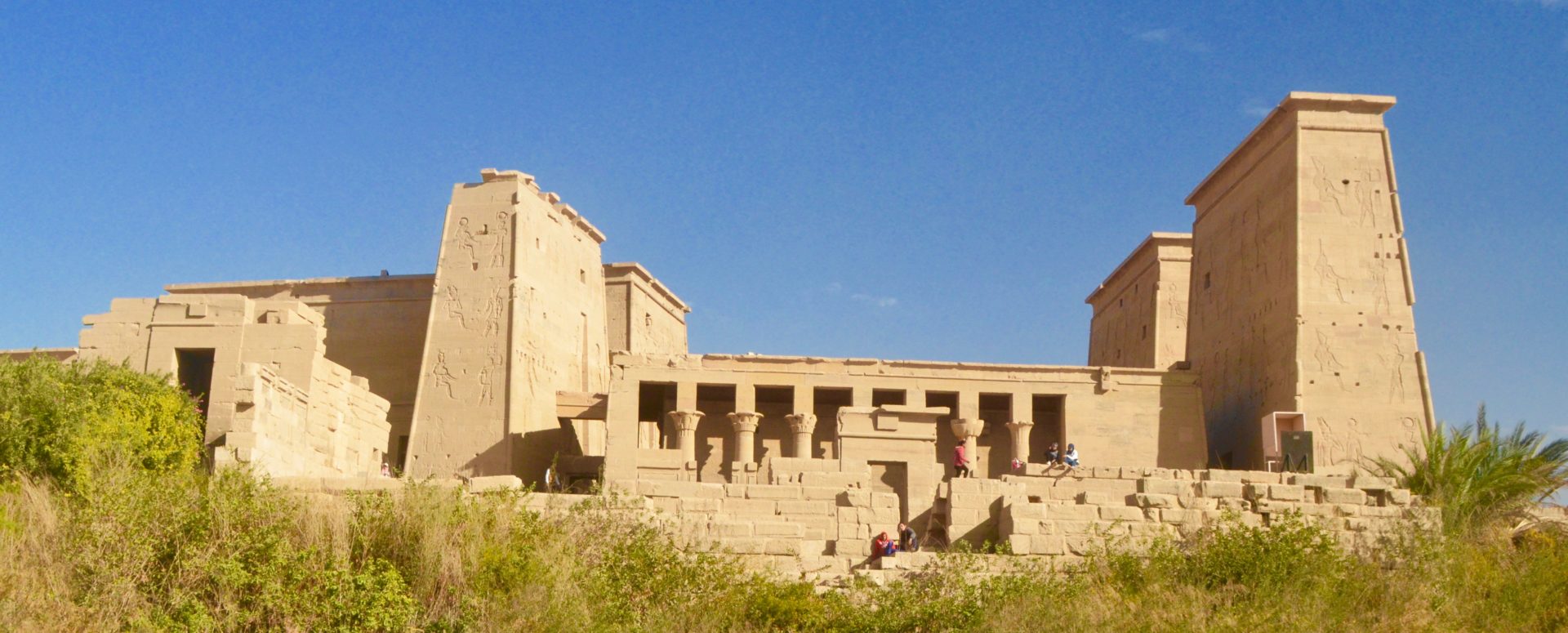
The Gateway to Abu Simbel
The great temples of Ramses II and his favourite wife, Nefertari at Abu Simbel are, in my opinion, after the Pyramids, the most mesmerizing of all the amazing sites you can visit in Egypt. They are extremely remote and most people take a day trip from Aswan, (actually it starts in the middle of the night) which is how Adventures Abroad got us there. I have also written a separate post on that wonderful experience which you can read here.
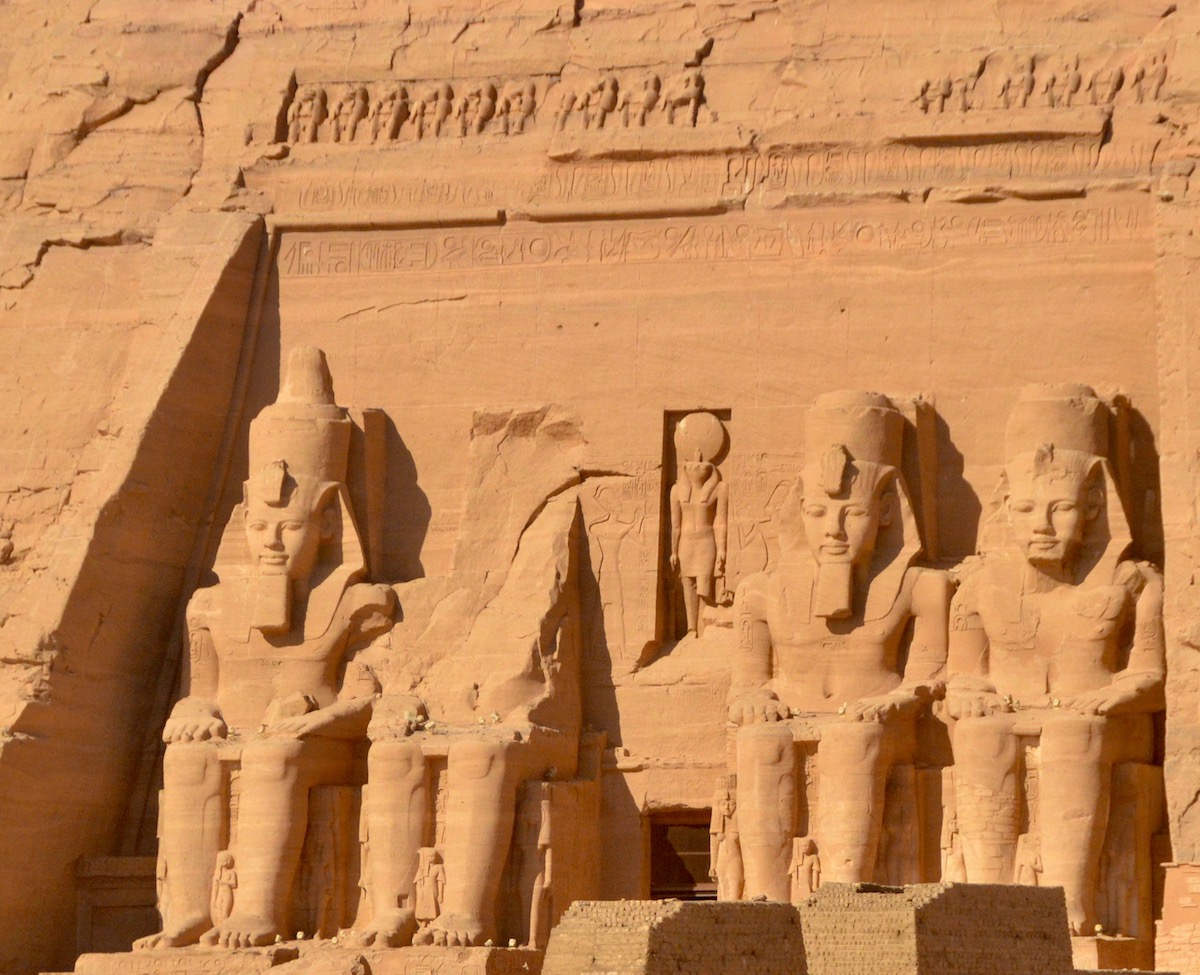
So after you’ve visited the Philae Temples and Abu Simbel what else is there to do in Aswan? Plenty.
The Nubian Museum
Acknowledging that Lake Nasser was going to destroy hundreds of thousands of artifacts, UNESCO, which oversaw the removal of the Abu Simbel and the Philae Temples to higher ground, decided to save as many as possible and house them in a museum in Aswan. Opened in 1997, the Nubian Museum is one of the finest small archaeological museums you will find anywhere. We had a free morning, took the Mövenpick boat over to Aswan and had a very enjoyable fifteen minute walk along the Kornishe to the museum. Along the way we passed two of the more modern Aswan monuments.
This is the Old Cataract Hotel as seen from the water. Operated by Sofitel, it is one of those legendary Victorian era hotels where anyone who was anybody has stayed on a visit to Aswan.
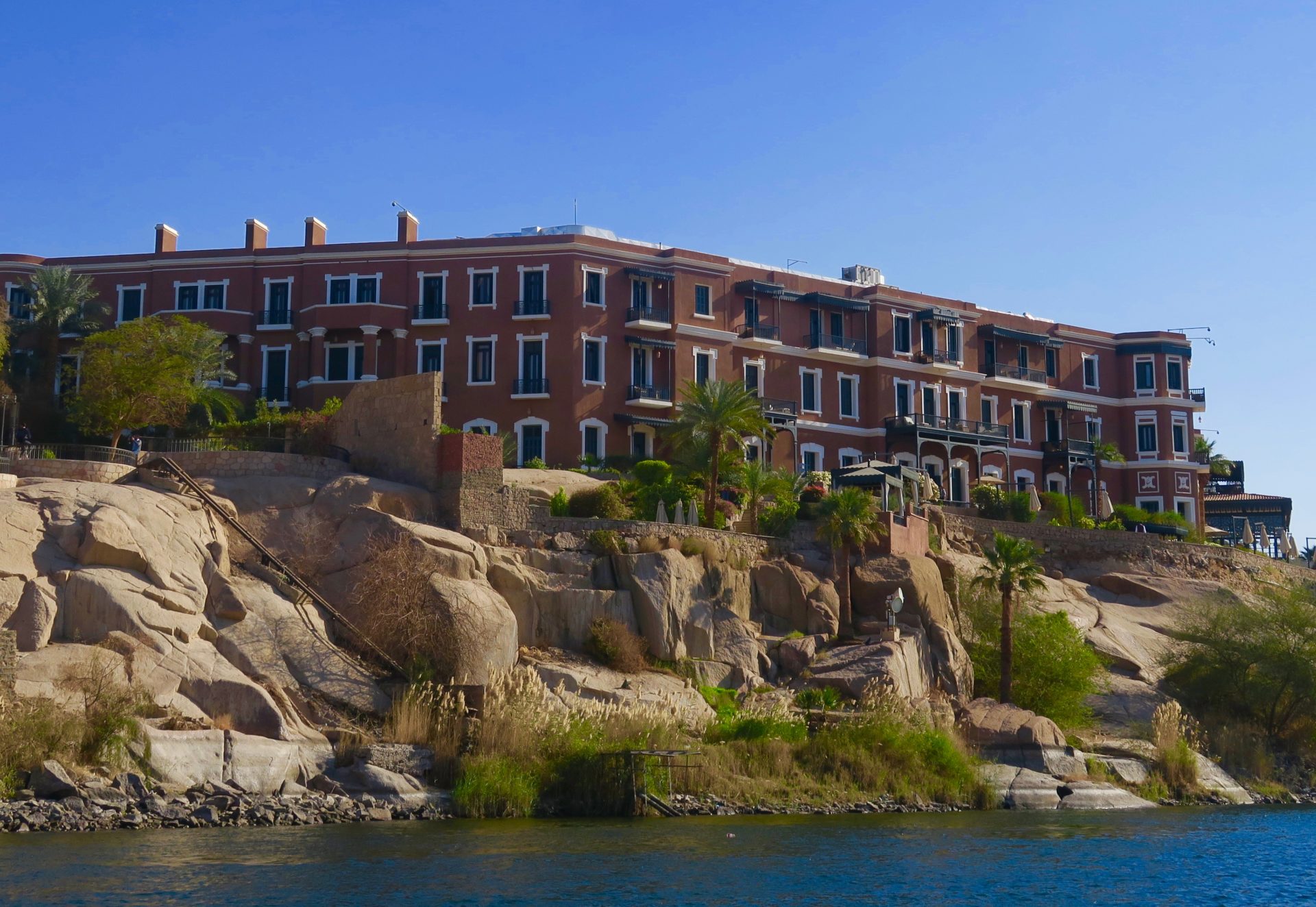
This is Archangel Michael’s Coptic Orthodox Cathedral, seemingly larger than any mosque we saw in Aswan. The Copts number in the many millions in Egypt and have gone through varying degrees of discrimination at the hands of the Muslim majority. Recently there have been bombings of Coptic churches in Cairo and Alexandria, but in Aswan it appears that the relationship is closer to one of mutual respect than outright antagonism. As we passed the cathedral on the way to the museum we saw many Coptic women dressed in traditional garments that were not that different than the hijabs worn by many Muslim women.
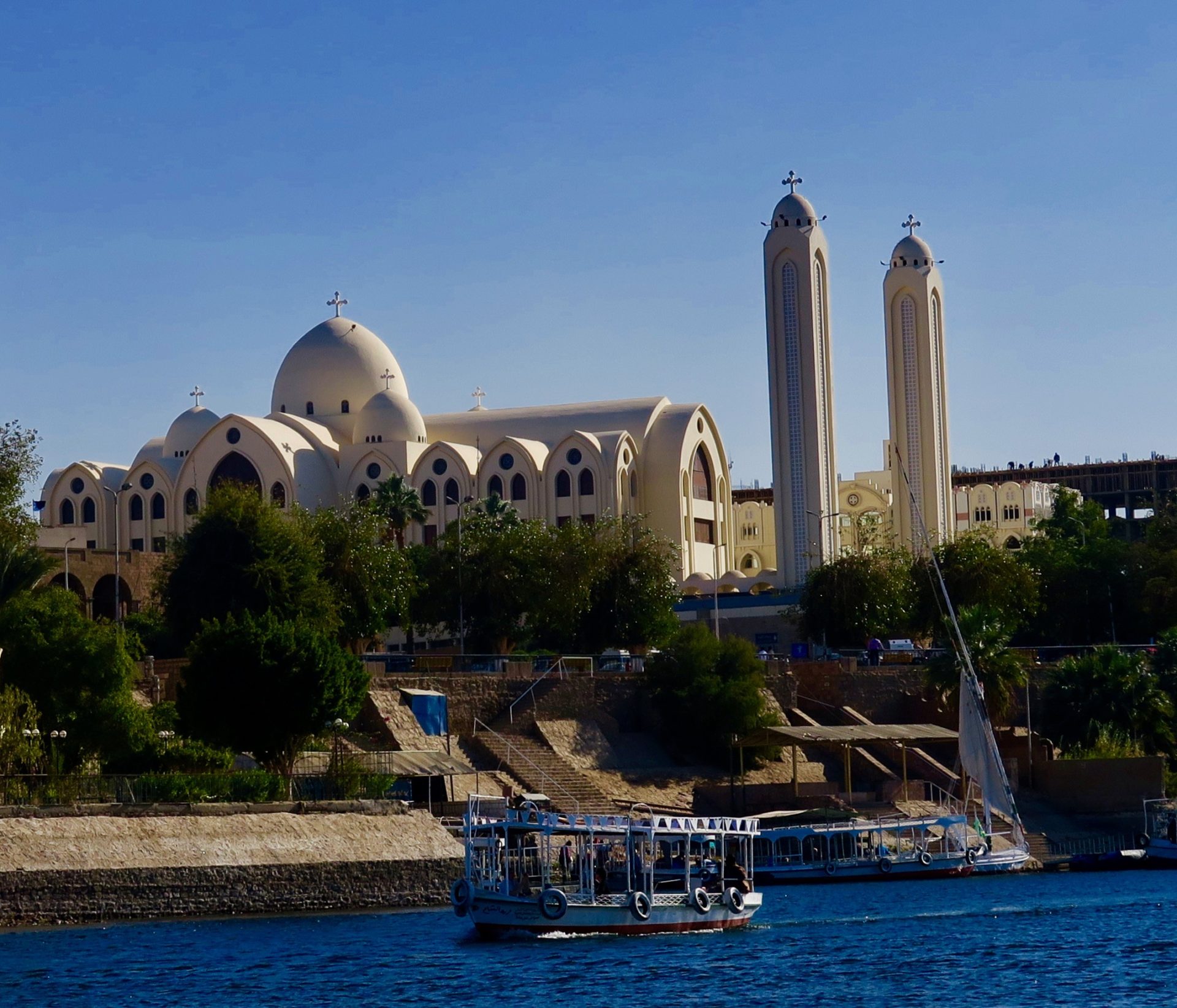
From the outside the museum is quite striking, mirroring traditional Nubian architecture and surrounded on all sides with gardens and fountains.
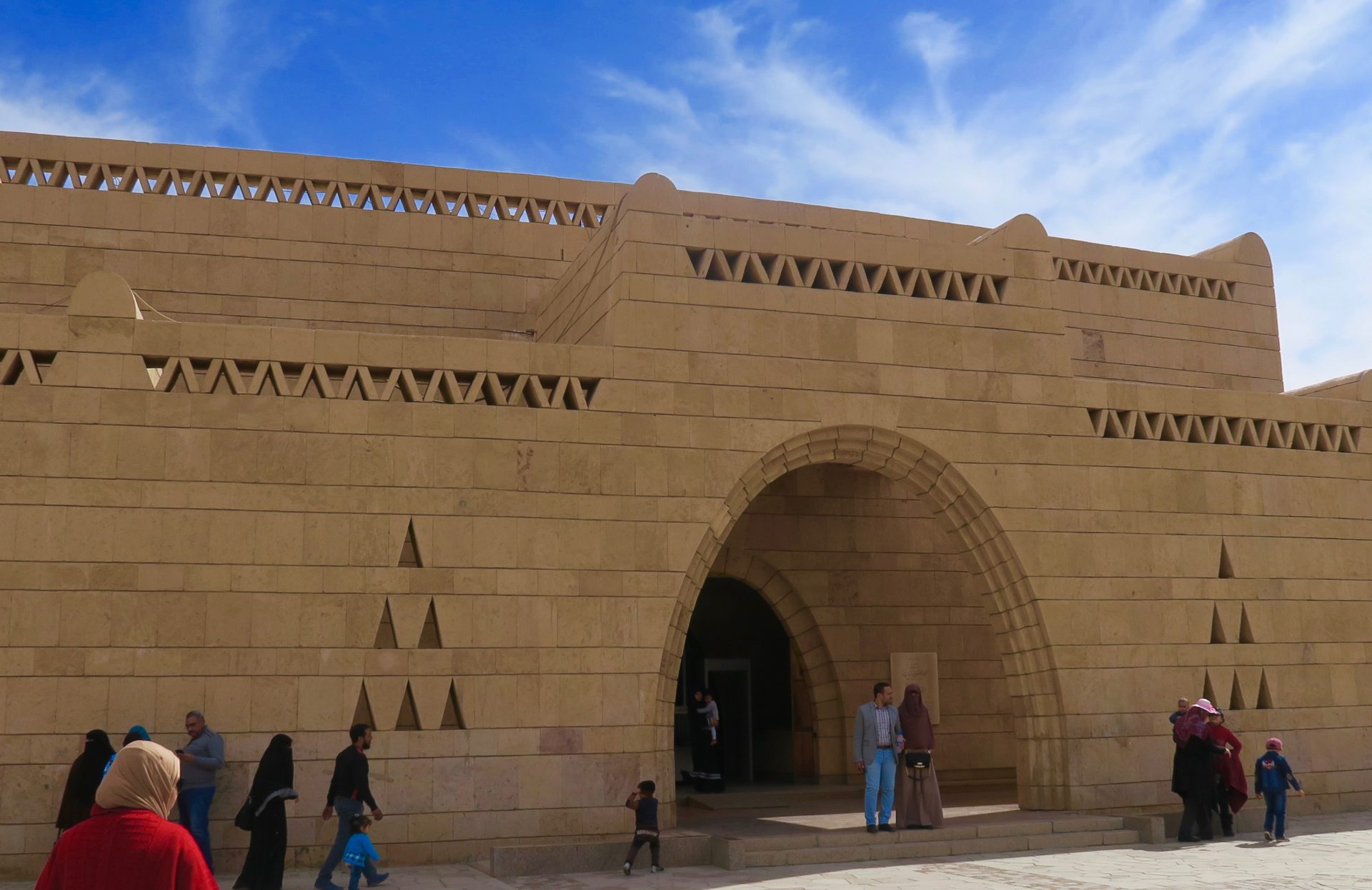
Inside the museum is spacious, low lit and laid out in a manner that takes you from the earliest Nubian cultures right up to the present day. Here are a few of the highlights.
This is a burial that goes back to the earliest period of Egyptian civilization – 3,500 B.C., well before mummification began.
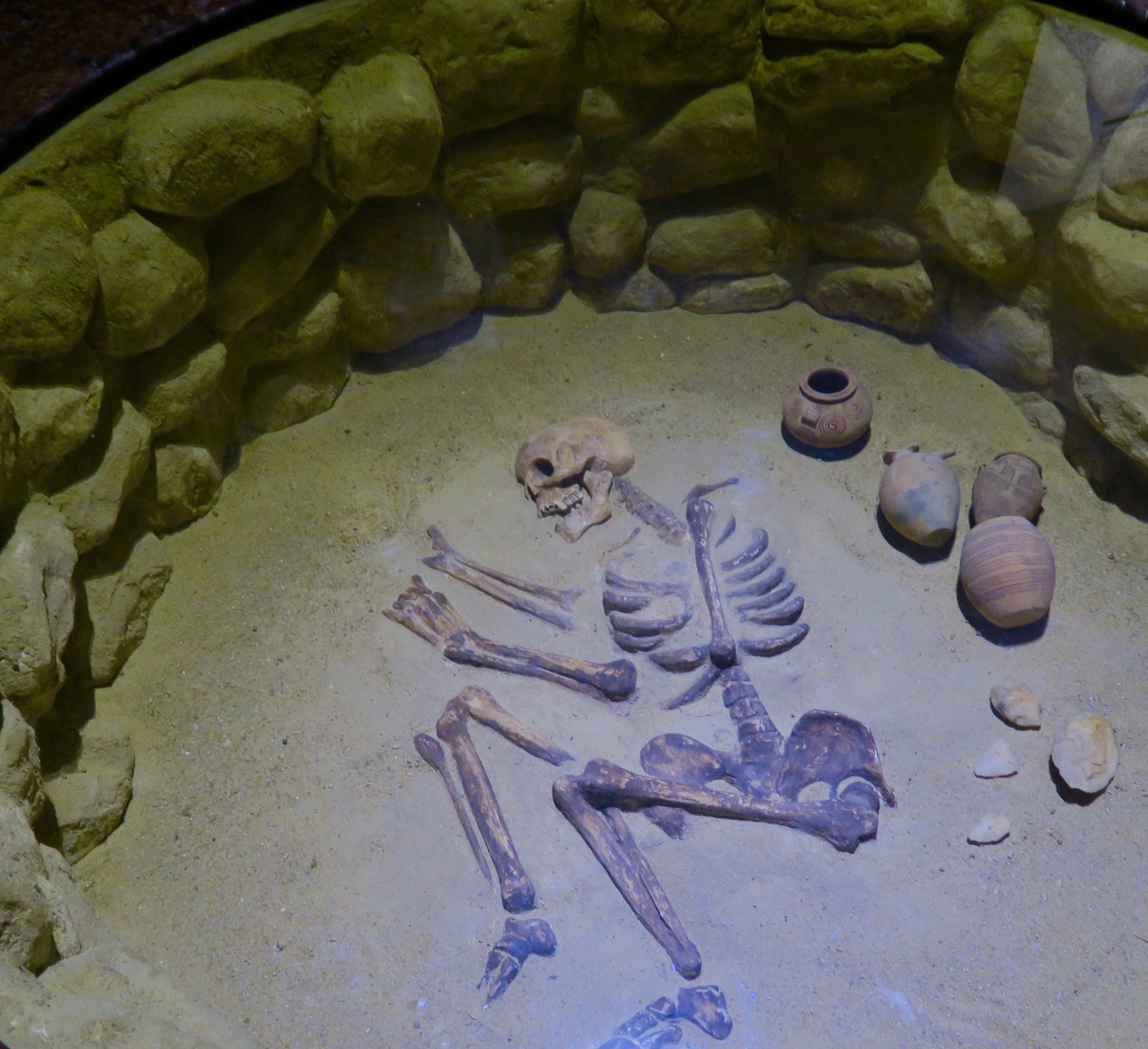
The most sacred part of every Egyptian temple was the Holy of Holies where statues of the gods for whom the temple was built, were kept. They were usually in a small flame lit room at the very back of the temple and the Egyptians really believed that the gods actually resided in the temple – kind of an ancient precursor to the modern saying, “If you build it, they will come.” Very few of these Holy of Holies have survived and this is what is left of one from a now flooded temple in Nubia. They were likely defaced by the same Christians who now complain of discrimination in modern Egypt.
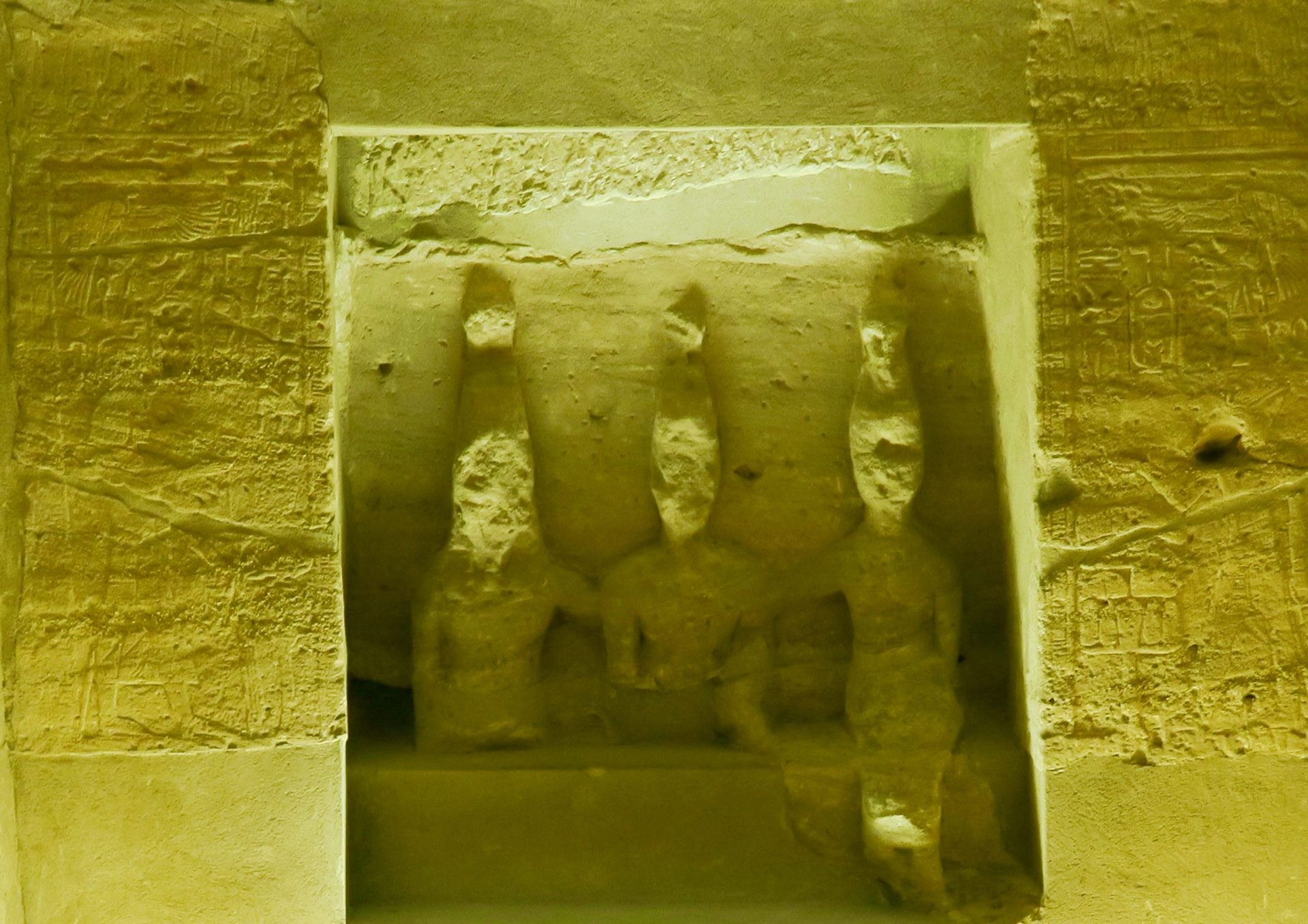
This is a mummified ram with a real golden fleece, at least in part.
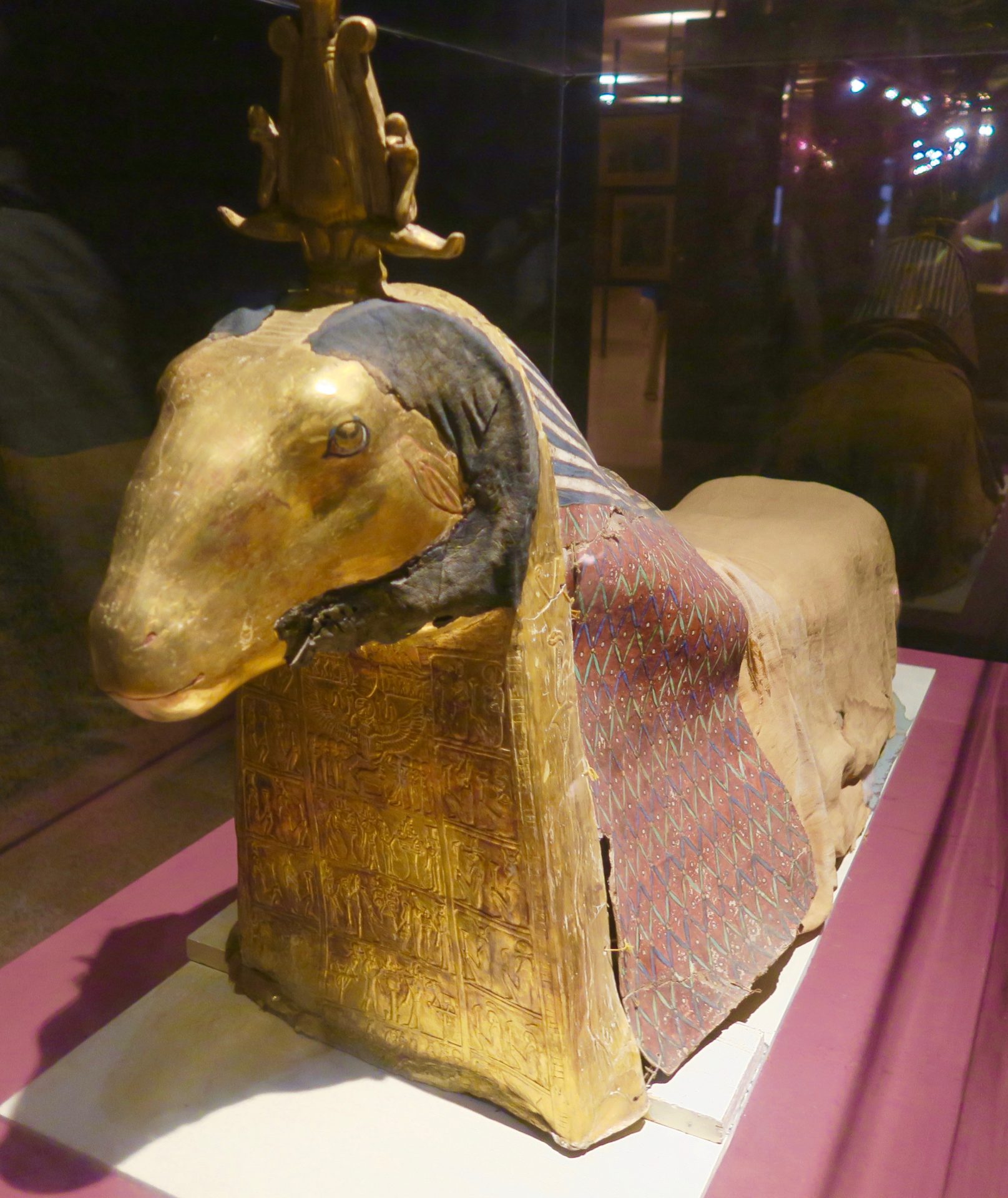
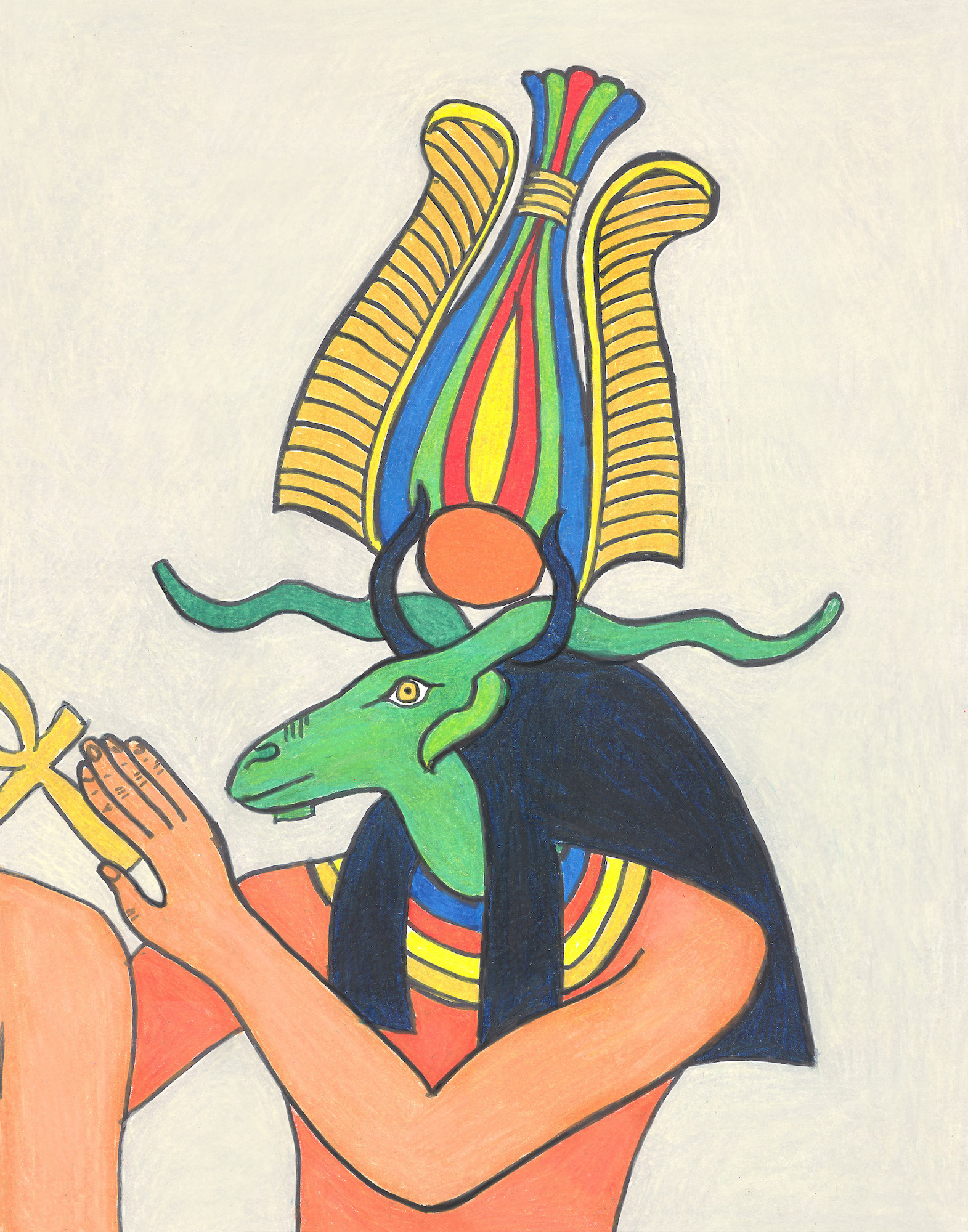
Khnum was the ram headed god thought to be responsible for the source of the Nile River and he was a big deal in Aswan. His main temple was on Elephantine Island, where the Mövenpick is located, but very little of it remains today and it’s not on most tourism itineraries. That’s the Old Cataract Hotel in the background.
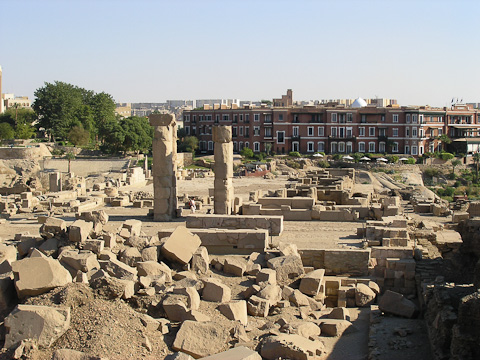
There is a small collection of sarcophagi in the Nubian Museum of which this is the best example. The paint is still vibrant after over 3,000 years.
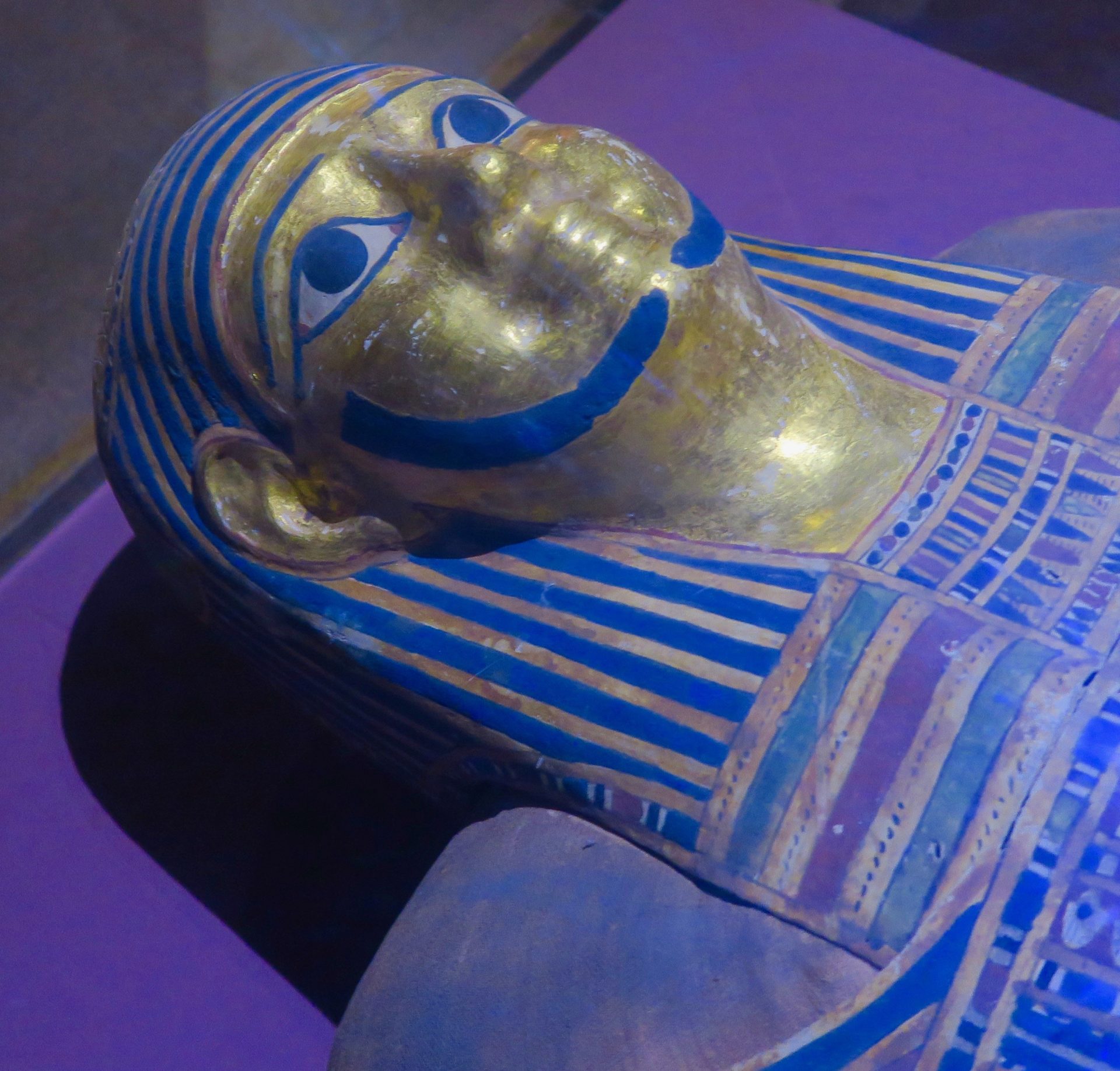
No self-respecting Egyptology museum would be complete without at least one statue of Ramses II and the Nubian Museum is no exception.
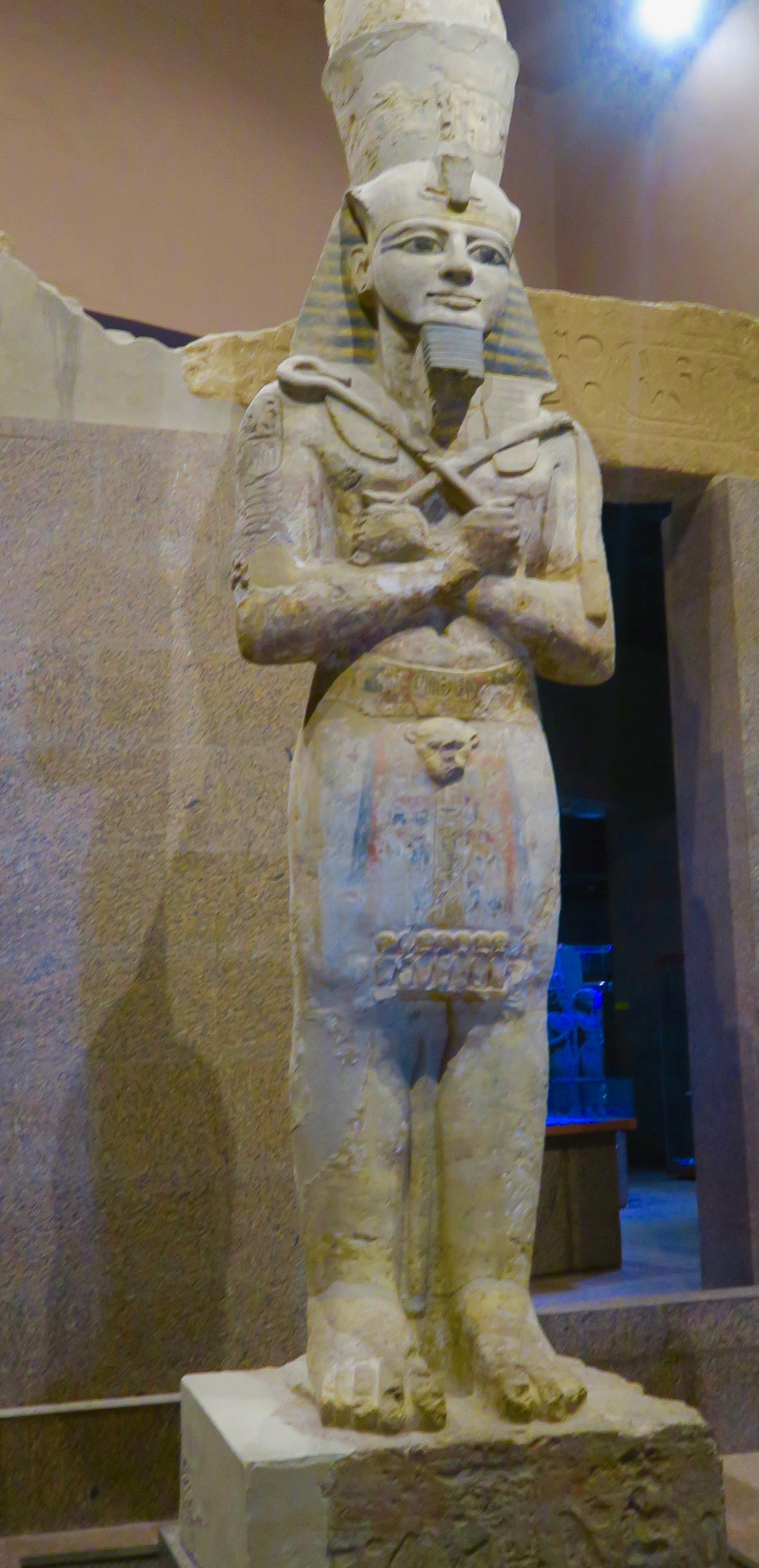
Among the most impressive displays are these two horses that were found inside a tomb. I guess the person buried with them wanted to have ready transportation awaiting him on the day he was reborn.
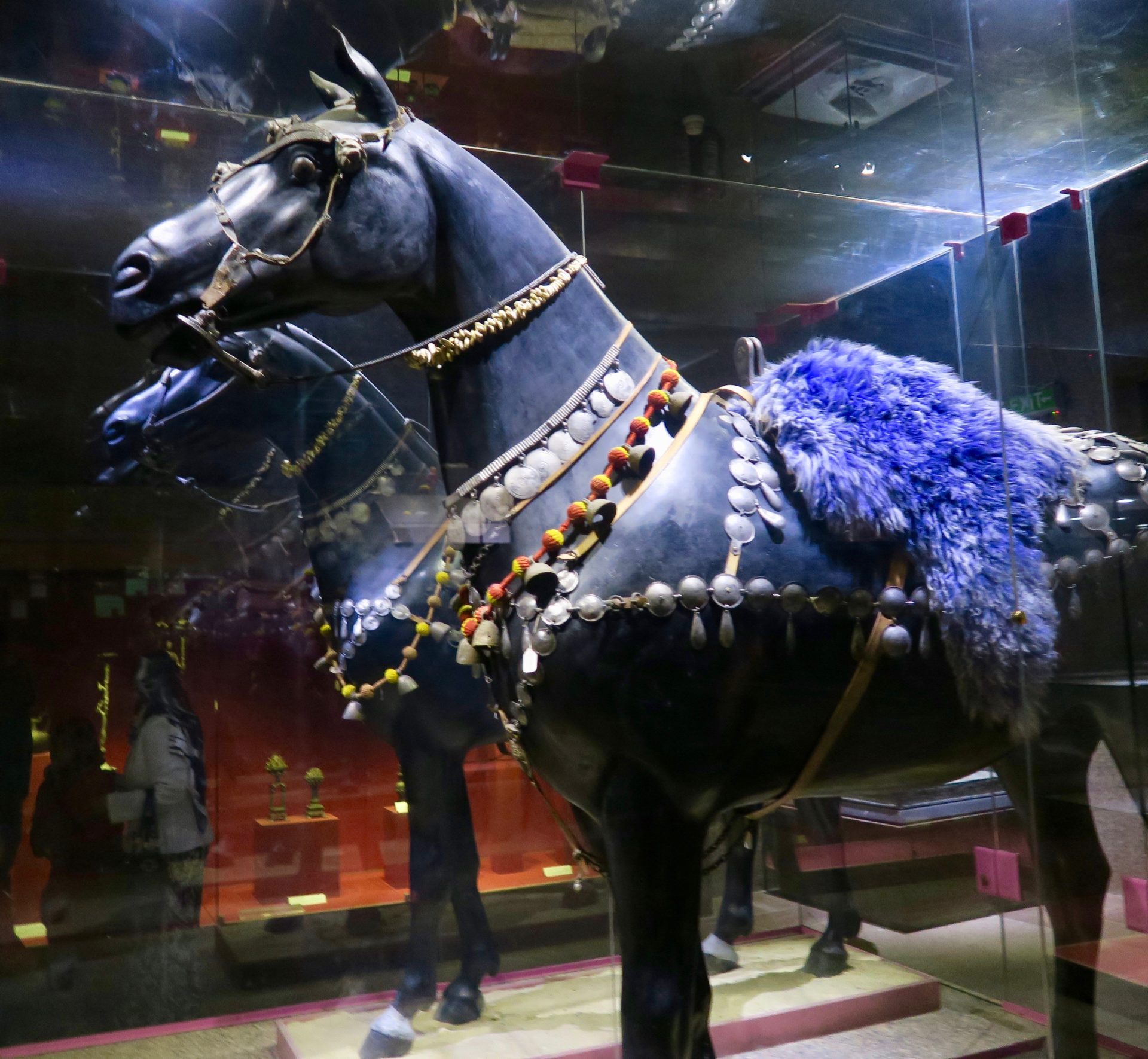
The Nubian Museum also tells the story of the removal and replacement of the temples of Ramses II and his queen Nefertari at Abu Simbel. Here is a chart showing the flags of all the countries that participated, including Canada’s.
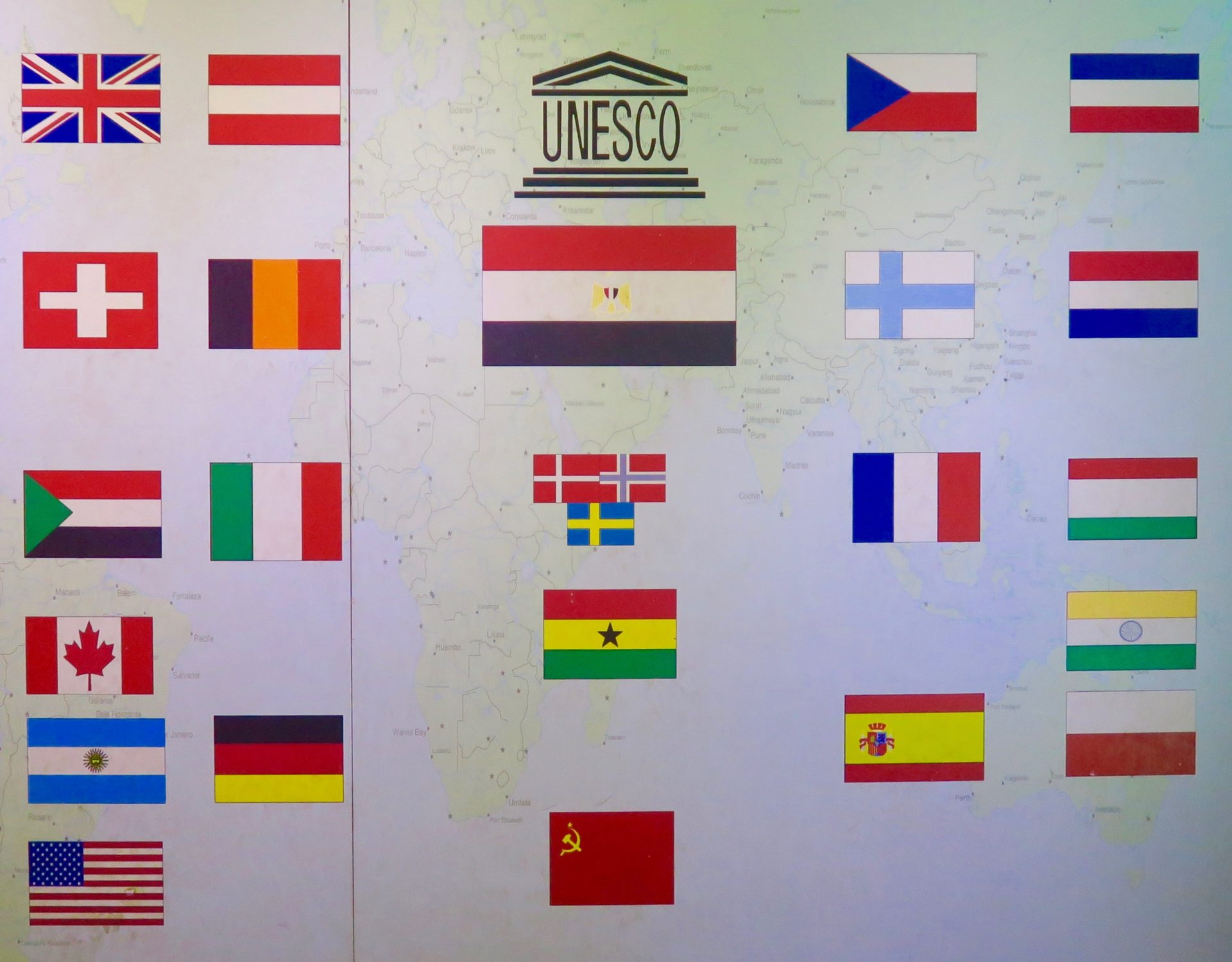
The final section of the museum is dedicated to life in modern Nubia. I particularly liked this diorama of a Nubian classroom. Notice the colourful head caps worn by the boys. These are very common in Aswan and make for one of better souvenirs you can pick up in the area. They are the real deal as opposed to the ersatz crap being sold at most tourist sites.
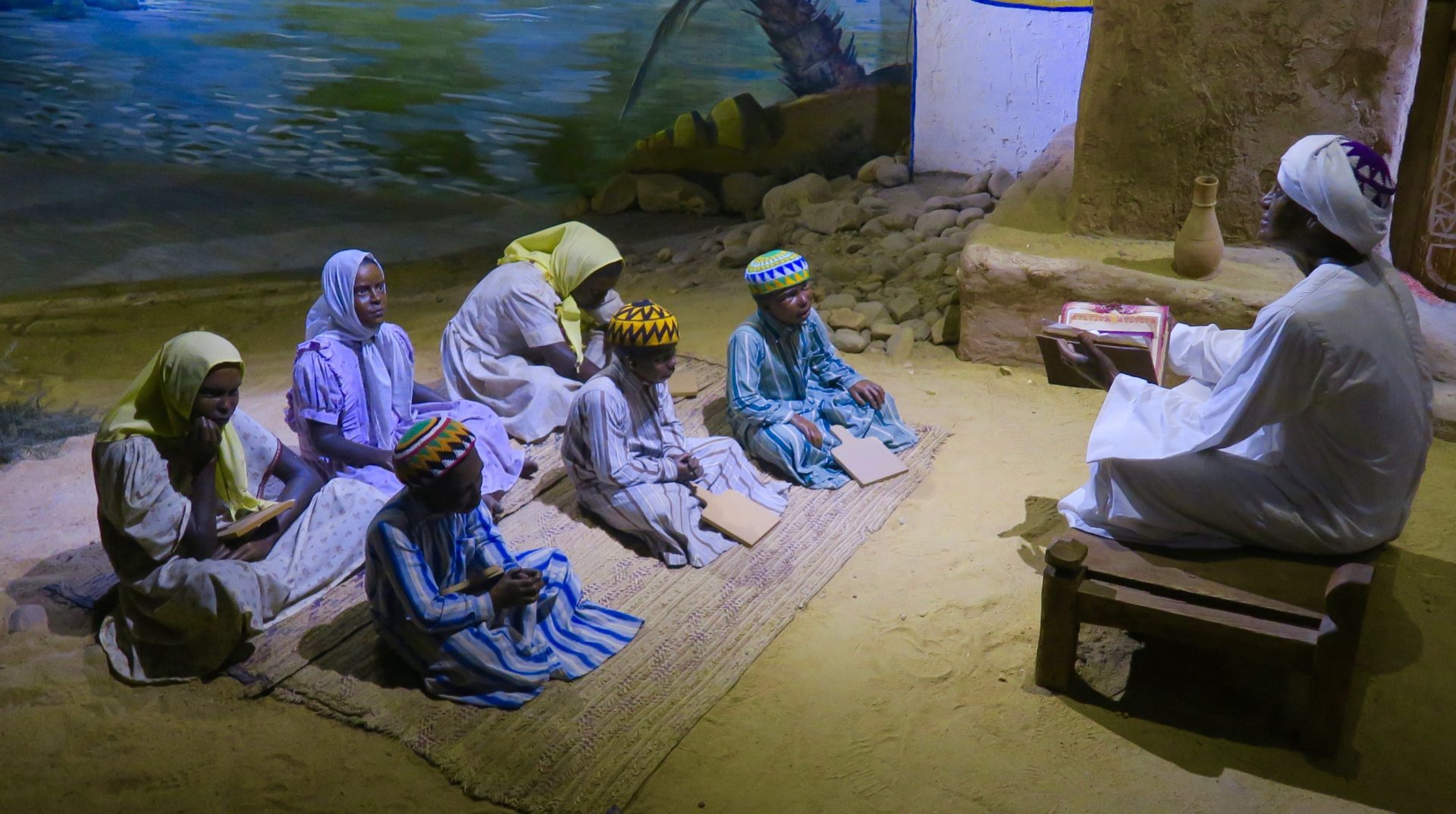
On the way back to the Kornishe from the museum we were followed by a group of young boys between six and ten. They were trying to sell us some god awful beads and when that didn’t work they appeared to break out in a spontaneous rendition of Frere Jacques followed by other well known children’s songs. The only problem was that we had heard these same songs, in the same order, at least twice before in different cities, so it was anything but spontaneous. Lurking somewhere probably nearby would be an Egyptian version of Fagan, damning these little kids to a life of deceit and poverty.
I have not come to the end of the reasons for visiting Aswan, but this post is long enough already. Still to come in the next post is a visit to a village in ancient Nubia, the Aswan Botanical Gardens and more. After that we’ll take a boat to visit the Philae Temples, one of the top attractions in all of Egypt.
Here is a link to the Egypt photo gallery with pics from every day of the trip.

